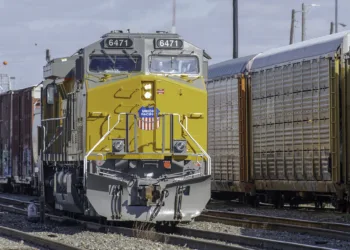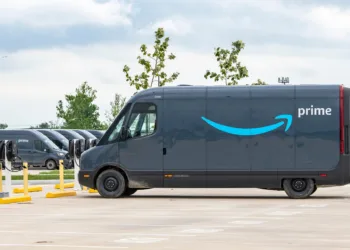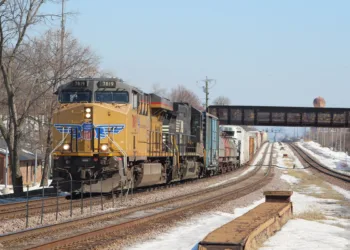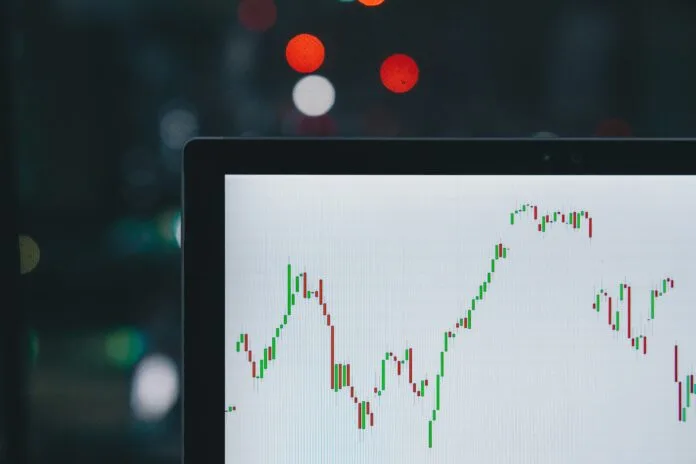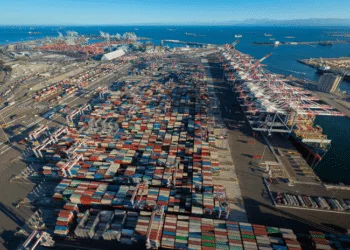This is contributed content. Contributed content does not reflect the views or opinions of FreightWaves or any of its subsidiaries.
On October 19th, thieves dressed like renovation workers used a stolen truck with a basket lift, parked it next to a gallery and used the gallery balcony to access a museum hall full of art and prized jewelry. After making light work of a glass case, they waltzed off with over $100,000,000 in jewelry and got away on scooters. One item was an emerald necklace Napoleon gave to his second wife, Empress Marie-Louise. The thieves literally stole the Crown Jewels of France.
They weren’t dressed in designer clothes. They didn’t need to do gymnastics in a temperature-controlled room, evading a highly complex security system full of lasers. And they didn’t need to subdue guards with any form of martial arts. No, they used a ladder, off-the-shelf power tools, and robbed a museum with an estimated art collection worth $45 billion with a “B”.
The wildest part about all of this isn’t even the mind-blowing simplicity of the heist; it’s that the museum only had approximately 65% of its galleries covered by actual cameras. The Mona Lisa sat right down the hall, likely smirking at the simplicity of the brazen theft.
The doofus of a labradoodle in my living room has a better surveillance system watching him than the now-empty jewel cases in the Louvre.
The Louvre, and now the Government of France are scrambling to get their load jewels back, but the reputational damage is done. Someone at that museum will likely lose their job over this theft. And no doubt private individuals or other museums with pieces on loan to the Louvre are likely reconsidering their partnership with the prestigious museum as well. After all, if they can’t protect Napoleon’s jewels, how can they protect my artwork?
Rewind to Freightwaves F3 2024. GenLogs founder, Ryan Joyce took the stage with Craig Fuller and announced that we’d use our nationwide camera network to help find and recover any stolen load. We had no idea how many people would reach out. We, like most of the industry, assumed the rising theft was primarily a sign of increasingly sophisticated criminals and that only a few victims would ask for assistance.
“We were hacked.”
“The carrier passed on [insert digital vetting tool here].”
“They had an inspection three month ago and looked good.”
“It was the broker’s fault.”
We’ve literally heard it all within these short 12 months.
But we’ve accidentally stumbled on something….
We’re all being lied to. We’re being told the criminals are more sophisticated than ever, deploying tools the average broker or carrier just can’t defend against. Social engineering campaigns, offshore email server farms, digital spoofing. Does it happen? Absolutely.
Is that who’s robbing the entire freight world right now? No. Don’t believe me, ask Shaq and my man at Flavortown, USA.
Also, check out Michael Finkel’s book, “The Art Thief.” It details how Stephane Breitwiser –inarguably the most successful art thief ever — walked into museums around Europe armed with only a pocket knife, taking anything that wasn’t nailed down, stuffing it in his shirt or pants and simply walking away. Investigators believe he stole over $1.3 billion in art over a six-year timeframe.
I hate to be the bearer of bad news, but 99.9% of the bad actors in freight look precisely like the guys at the Louvre and Breitwiser, exploiting a shockingly lax security system. We know this because GenLogs just completed its 400th investigation. I’ve personally been on over 100+ calls and in every single instance, the nefarious actor who somehow managed to “pass” on every other vetting platform out there was clearly identified as someone you wouldn’t want to do business with by the GenLogs platform.
Even when I run the company MC/DOT, which was “hacked”, more often than not, they look just as suspicious on GenLogs as the very company believed to have stolen the load. And we don’t think that’s a coincidence.
But there’s a huge silver lining to this increase in theft and the fact that practically no GenLogs customers are being robbed. It means there’s a tool out there to identify (and avoid) most of the criminals in the freight world.
Telling yourself that your adversary is too sophisticated to be caught is a self-fulfilling prophecy. It allows you to continue checking the “pass” boxes without a candid look at your security and processes. After all, there’s nothing you can do, right?… Everybody is getting hit.
Most of the companies in our industry are being robbed by people using the equivalent of a ladder and basic tools. They’re exploiting the fundamental cracks in our system and using them against us. Even simple cameras could prevent a lot of this theft.
- Does your current vetting platform provide any visuals allowing two-factor authentication (digital and images) to confirm equipment type?
- Can you pull images confirming your carrier has actually operated in either part of your OD pairing?
- Can you see their movement over time to ensure they haven’t recently purchased an MC?
If not, you’re likely relying on single source vetting, taking in FMCSA and ELD data — both of which GenLogs uses, but in conjunction with our 15,000,000 images we get per day of trucks and equipment on the road.
The world’s top museum will surely spend millions improving its security after losing hundreds of millions. And it’s very possible that even the most advanced camera system won’t stop the most determined criminals, but it does serve as a good deterrent. Your ability to fact-check a carrier’s movement could save you a load, customer, and your reputation. Let GenLogs show you how to protect your Crown Jewels.
The post What the Louvre heist teaches us about freight fraud and cargo theft appeared first on FreightWaves.




